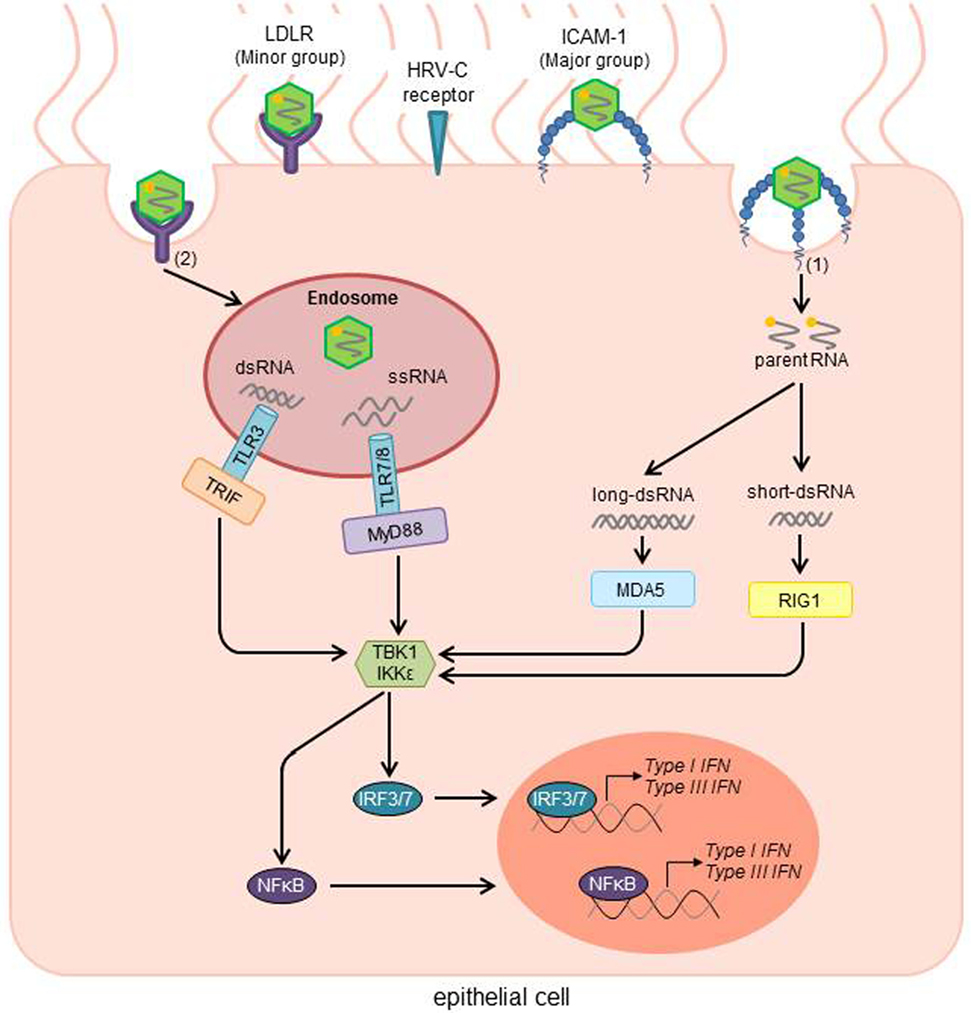Department of Molecular Pneumology, Friedrich-Alexander-Universität Erlangen-Nürnberg, Universitätsklinikum Erlangen, Erlangen, Germany
Asthma bronchiale is a disease of the airways with increasing incidence, that often begins during infancy. So far, therapeutic options are mainly symptomatic and thus there is an increasing need for better treatment and/or prevention strategies. Human rhinoviruses (HRVs) are a major cause of asthma exacerbations and might cause acute wheezing associated with local production of pro-inflammatory mediators resulting in neutrophilic inflammatory response. Viral infections induce a characteristic activation of immune response, e.g., TLR3, 4, 7, 8, 9 in the endosome and their downstream targets, especially MyD88. Moreover, other cytoplasmic pattern recognition molecules (PRMs) like RIG1 and MDA5 play important roles in the activation of interferons (IFNs) of all types. Depending on the stimulation of the different PRMs, the levels of the IFNs induced might differ. Recent studies focused on Type I IFNs in samples from control and asthma patients. However, the administration of type I IFN-α was accompanied by side-effects, thus this possible therapy was abandoned. Type III IFN-λ acts more specifically, as fewer cells express the IFN-λ receptor chain 1. In addition, it has been shown that asthmatic mice treated with recombinant or adenoviral expressed IFN-λ2 (IL–28A) showed an amelioration of symptoms, indicating that treatment with IFN-λ might be beneficial for asthmatic patients.


 Nina Sopel
Nina Sopel Andreas Pflaum
Andreas Pflaum Julia Kölle
Julia Kölle Susetta Finotto
Susetta Finotto